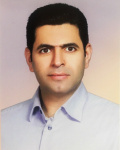| نویسندگان | مریم نوریزاده,حامد نقوی,ابراهیم امیدوار |
|---|
| نشریه | Natural Hazards |
|---|
| شماره صفحات | 1 |
|---|
| شماره مجلد | 1 |
|---|
| ضریب تاثیر (IF) | ثبت نشده |
|---|
| نوع مقاله | Full Paper |
|---|
| تاریخ انتشار | 2024-01-04 |
|---|
| رتبه نشریه | علمی - پژوهشی |
|---|
| نوع نشریه | الکترونیکی |
|---|
| کشور محل چاپ | ایران |
|---|
| نمایه نشریه | SCOPUS ,ISI-Listed |
|---|
چکیده مقاله
Soil erosion has attracted the attention of researchers and managers as an environmental crisis. One of the effective factors in soil erosion is land use and land cover (LULC) change. Accordingly, the purpose of the present study is to explore the effect of LULC change on soil erosion in a semi-arid region in the southwest of Iran. LULC change map was generated over a period of 30 years (1989–2019) using a new approach in which the Normalized Difference Vegetation Index (NDVI) time series of each year was classified in the google earth engine (GEE). For classifying the NDVI time series, a nonparametric Support Vector Machine (SVM) classification method was employed. The LULC maps were also used as an input factor in the soil erosion estimation model. The amount of soil erosion in the region was estimated using the Revised Universal Soil Loss Equation (RUSLE) empirical model in the Geographical Information System (GIS) environment. Validation of LULC maps generated in GEE indicated overall accuracy higher than 86% and the kappa coefficient higher than 0.82. The study of LULC change trends revealed that the area of forests, pastures, and rock outcrop in the region has diminished, while the area of agricultural and residential LUs has been expanded. Also, the highest rate of LULC conversion was related to the conversion of forests to agricultural lands. Estimating the amount of soil erosion in the region using the RUSLE model indicated that the average annual erosion in 1989 and 2019 was 15.48 and 20.41 tons per hectare, respectively, which indicates an increase of 4.93 tons in hectares, while the hot spots of erosion in the area have increased at the confidence levels of 90, 95, and 99%. Finally, matching the LULC change map with the soil erosion map revealed that the degradation of forests and pastures as well as their conversion to agricultural lands has had the greatest impact on the increase in soil erosion.
